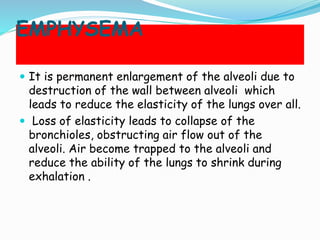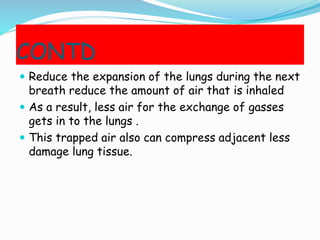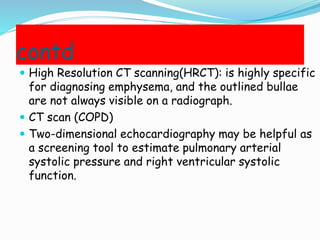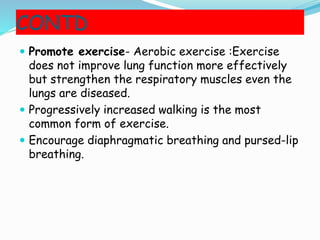This document provides information on chronic obstructive pulmonary disease (COPD). It begins with an introduction stating that COPD is a progressive and partially reversible disease comprising chronic bronchitis and emphysema. It then discusses the incidence and prevalence of COPD in the United States. Next, it describes the signs and symptoms of chronic bronchitis and emphysema. It concludes by outlining the diagnostic tests, complications, medical management including medications and lifestyle changes, and nursing management of COPD.














































